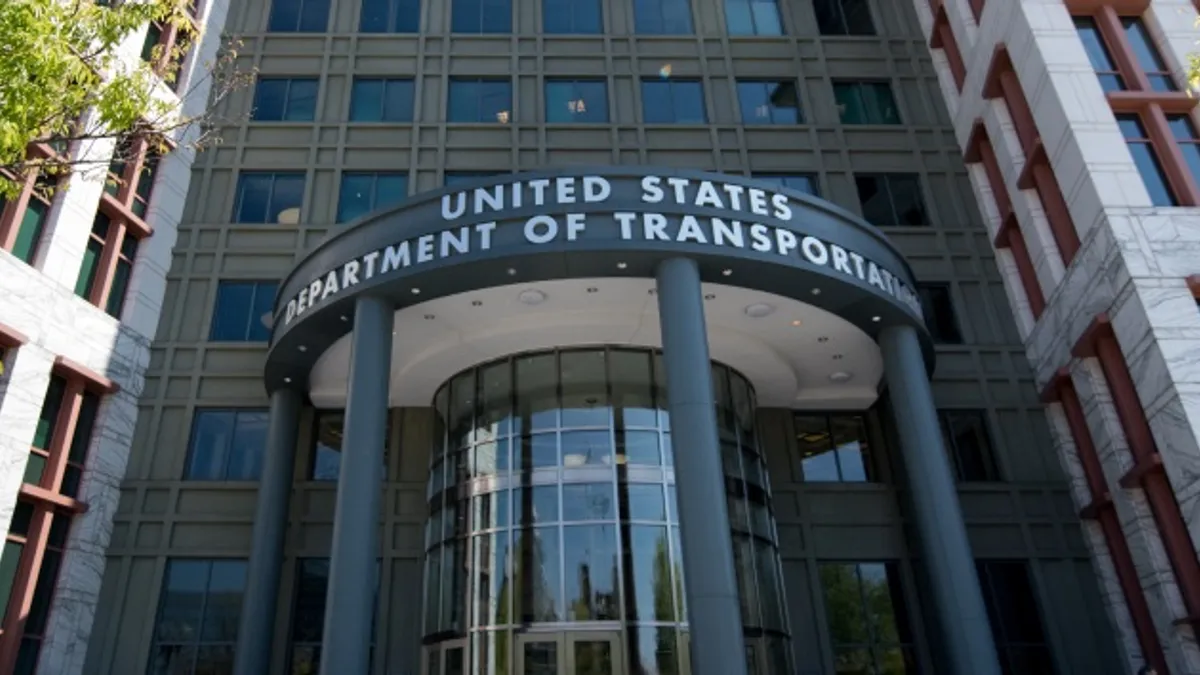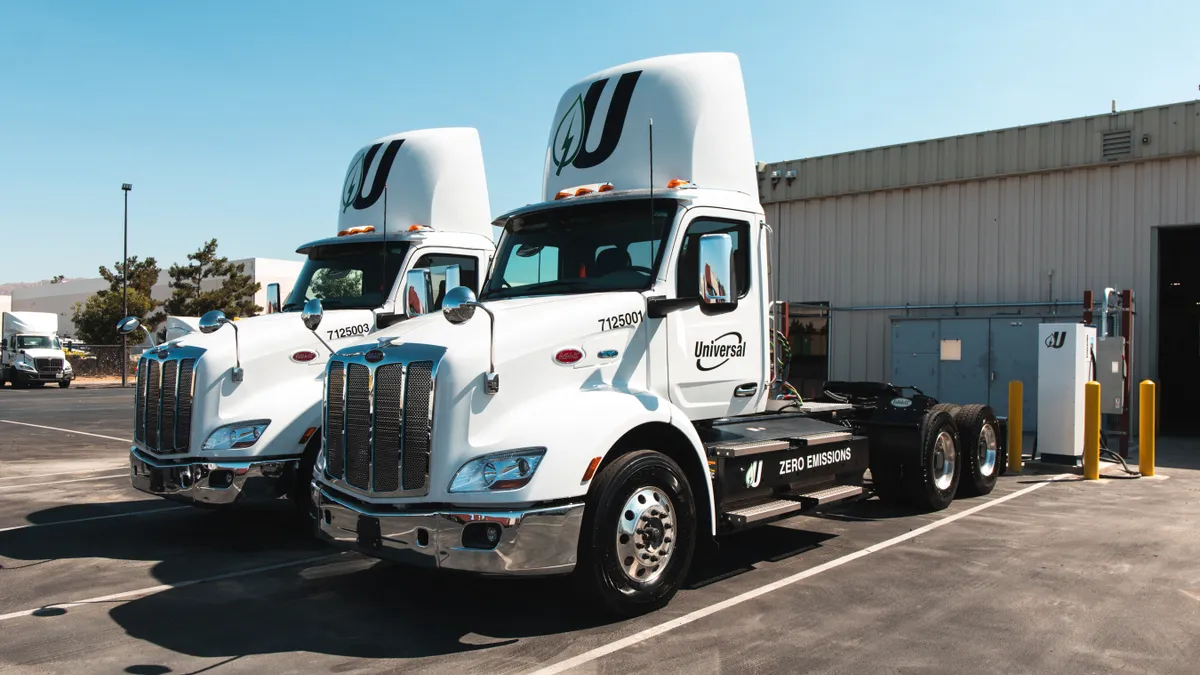New regulations in front of state and federal regulators could create obstacles for how trucking carriers operate.
Some moves could push up equipment costs, limit a truck's maximum speed and challenge owner-operator business models, according to industry advocates.
But other shifts could bode positively for the industry, with lawmakers potentially funding critical infrastructure to address persistent issues in limited parking for trucks.
California Advanced Clean Fleets regulation
The California Air Resources Board is slated to reach a final decision this spring on new rules that would require zero-emission vehicles at ports and could force large carriers to overhaul their fleets. Changes could begin as early as 2024 for certain commercial truck purchases.
Newly registered drayage trucks, for example, would have to have a zero-emission powertrain starting in 2035, accordingto a proposal. Medium- and heavy- duty trucks in general would also have to be zero-emission beginning model year 2040 — if the ultimate purchaser is in California.
Trucking voices such as the Harbor Trucking Association noted concerns over infrastructure availability, deployment timelines and other constraints, such as vehicle range capabilities. The group’s CEO, Matt Schrap, asked the board in submitted comments to "come back with a realistic proposal that considers the challenges and potential impacts to drayage operators."
EPA emissions changes
A final rule from December will require stricter standards on emissions for heavy duty trucks with model years 2027 and beyond, but it's already generating questions about how fleet managers will pursue purchases.
The Environmental Protection Agency is updating its emissions standards for the first time in over 20 years, and the new rules are 80% stronger than current limits.
The agency said the rule will increase the useful life of affected vehicles by 1.5 to 2.5 times, though those in the trucking industry say the move will raise costs and discourage fleets from buying new equipment.
Truckload Carrier Association President Jim Ward said in a statement that the industry has made significant progress to protect the environment, where trucks today emit 60 times less than in 1988, and such engines have cut nitrogen oxide and particulate matter emissions by more than 98%.
"TCA is concerned the new emissions standards for heavy-duty trucks will limit equipment options for carriers, as well as worsen environmental outcomes in the long run by raising prices and, in effect, disincentivizing fleet turnover," Ward said.
Overall, heavy-duty vehicles are the largest contributor to mobile-source emissions of nitrogen oxide pollution, according to the EPA, and medium-and heavy-duty trucks are the second largest mobile source of greenhouse gas emissions in the U.S., behind light-duty vehicles.
Independent contractor rules
The Biden administration is considering whether independent contractors should be classified as employees, raising questions about benefits and overtime pay for owner-operators.
The rule comes amid clashes over California's AB5 labor law, which requires fleets to treat owner operators as employees. Trucking companies have already begun severing relationships with independent carriers in response to the rule.
The Owner-Operator Independent Drivers Association President Todd Spencer said in a court filing that California's law means that owner-operators must give up on hauling to and from California or bear enormous expense in changing their business models.
Expanding the rule to the federal level could create more disruption. A proposal was reintroduced by the Department of Labor last year, generating over 54,000 comments.
Trucking industry advocates such as the American Trucking Associations have challenged the proposed changes. And the Truckload Carriers Association will be addressing the issues with elected officials, TCA Senior Vice President of Safety and Government Affairs David Heller told Transport Dive, saying, "It's imperative that we preserve that business model."
Heavy vehicle speed limiters
The FMCSA is expected to evaluate whether certain trucks should be manufactured to limit their maximum speed to reduce crash severity, fatalities and injuries, according to agencies.
The proposal would be limited to commercial motor vehicles that are 26,001 pounds or more with an electronic engine control unit. A proposal could be unveiled as soon as June 30.
But resistance has already been building. Joe Rajkovacz, director of governmental affairs and communications for the Western States Trucking Association, noted his group questions whether FMCSA even has the authority to take such a measure. A letter written on the group's behalf argued a speed limiting device push wasn't for safety but "a misguided effort to use federal traffic safety laws to govern emissions of greenhouse gases from trucks."
Meanwhile, the American Trucking Associations has shown support for limiting the maximum speed, citing safety concerns and calling for a restriction of 70 mph for Class 7 and 8 trucks if they have automatic emergency braking and adaptive cruise control. It also noted that many of its members have already adopted speed limiters within their fleets.
A call for input on the topic drew over 15,000 comments last year.
Truck parking legislation
Truck parking needs continue to persist, creating issues such as safety and wasting drivers' time in pursuing spots.
A potential solution could come through Congress. During legislators' last session, twin bills in the House and Senate previously called for $755 million in funding from 2023–2027 fiscal years to add more truck parking.
Republican concerns over spending could limit financial backing, industry insiders say, but the bill could be tacked on to an omnibus spending bill.





















